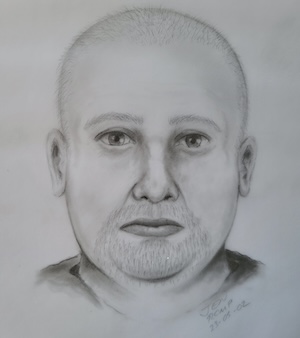Summary
 In June 2022, the remains of an unidentified individual were discovered submerged in the Bow River, Calgary’s major waterway which flows through the city in the province of Alberta, Canada. The Calgary Police Service was called to the scene and determined the remains were that of a male. At the time, the local fire department was called in to retrieve the remains from the water. Police exhausted all traditional methods of attempting to identify the man, but their investigation failed to yield any information about his identity.
In June 2022, the remains of an unidentified individual were discovered submerged in the Bow River, Calgary’s major waterway which flows through the city in the province of Alberta, Canada. The Calgary Police Service was called to the scene and determined the remains were that of a male. At the time, the local fire department was called in to retrieve the remains from the water. Police exhausted all traditional methods of attempting to identify the man, but their investigation failed to yield any information about his identity.
Knowing there was a family out there looking for answers about their loved one, a composite sketch and description of the man was released to the public the following month in hopes that it would generate information that could lead to a positive identification. The man was believed to be between 30 and 50 years old at the time of his death. He stood 6’4” tall, weighed approximately 245 pounds, and was described as having a light skin tone and a bald or shaved head. A year later, police once again released a plea to the public with information and an additional composite sketch of the man to ask for help identifying him. Unfortunately, both composite sketches and information released did not assist investigators in obtaining an identity.
In the fall of 2023, the Calgary Police Service, in cooperation with the Office of the Chief Medical Examiner in Alberta, submitted forensic evidence to Othram in The Woodlands, Texas in hopes that advanced DNA testing and forensic genetic genealogy could help to identify the man. Othram scientists successfully developed a DNA extract from the evidence and then used Forensic-Grade Genome Sequencing® to build a comprehensive genealogical profile for the unknown man.
After successfully completing the process, the profile was delivered to Calgary Police Service who worked with Convergence Investigative Genetic Genealogy to develop new leads in the case. Together they successfully identified the man in December 2023. The use of this technology finally allowed investigators to provide answers to the man’s family and loved ones. Investigators determined that the man’s manner of death was not criminal in nature and no further details regarding the decedent will be released.
The Calgary Police Service considers this identification to be a large accomplishment as traditional identification methods had been unsuccessful for nearly 18 months. This is the first time the Calgary Police Service used forensic investigative genetic genealogy in an unidentified human remains case. This case represents the third case solve announcement in Alberta leveraging technology developed by Othram.
